Advance Tech Element Sample
Introduction
Home to the Albright Industrial Estate, which encompasses this block of property of 1.99 hectares and can be found to the south of Rainham’s main commercial district, the Albright Industrial Estate also contains the Albright Industrial Estate. This site provides convenient access to both the Channel Tunnel Rail Link and the A13(Feng,2020).
6 It is now being utilised as a warehouse complex, and the site itself has a number of structures that serve the function of storing products. There is one detached warehouse that is 4,627 square metres in size, in addition to three more warehouses that are, in order of size, 1,462 square metres, 1,752 square metres, and 602 square metres respectively. In order to achieve maximum productivity and efficiency, the two largest warehouses are connected to one another via overhead walkways. Although there is a substantial colonisation of flora around the site borders and behind the buildings, the majority of the land is covered with hard standing composed of asphalt and concrete. This is despite the fact that there is significant vegetation colonisation around the site boundaries. This is because the vast bulk of the land has already been built into buildings and roads.
Background
It is possible to find it inside the Albright Industrial Estate on the western side of Lamson Road, only a short distance from Ferry Lane North. This location may be reached by travelling a short distance from Ferry Lane North. The Albright Industrial Estate may be found around 700 metres to the north of the A13 Thames Gateway if you are travelling on the Transport for London Road Network in London (TLRN). The Rainham railway station is located around 400 metres away and serves as a connecting point for national rail service to both Grays and London Fenchurch Street. The neighbourhoods of Grays and London Fenchurch Street may both be found within the metropolitan area of London. The fact that there are no bus stations within a quarter of an hour’s walking distance of the site is, however, something that may be regarded a drawback associated with the location. You will find the stations that are geographically closest to you on Bridge Road, which is located around 580 metres to the north of the entrance to the property. As a direct result of this, the website in issue received a grade of PTAL 2 for accessibility with regard to public transit. In contrast, websites that have the highest possible potential degree of accessibility are given the rating of PTAL 6, which is the highest possible grade available.
Project Planning and Overview
On the parcel of land that is accessible through Lamson Road, the construction of an anaerobic digestion plant (also known as an AD plant), a recycling centre for aggregates and metals, and a solid fuel recovery facility are all planned to take place.
9 Solid recovered fuel, often known as SRF, is a non-hazardous alternative fuel that satisfies the classification and specification criteria of the European standard EN15359. This fuel is also referred to as “solid recovered fuel.” It is created from trash that is not considered to be dangerous and is then used for the purpose of energy recovery as part of the process. Solid recovered fuel, which is more often referred to by its acronym SRF, is a substitute for coal and gas that is used in the cement business as well as in the power producing sector. The use of biomass in the SRF system results in a contribution being made toward the achievement of objectives relevant to the utilisation of renewable energy. SRF would be produced at the proposed factory on Lamson Road by using C&I wastes that are now disposed of in landfills because it would be too difficult to classify these wastes for recycling reasons. The classification of these wastes would be done for the purpose of producing SRF. The remaining forty percent of the SRF consists of plastic and paper that has been shredded extremely finely (between 15 and 50 millimetres) and that was conveyed to the market in containers without being compacted. These materials were brought to the market in containers. The SRF is composed of sixty percent biomass and ten percent other components, with the remaining percentage being other materials.
Materials and Requirements
The planned plant would bring in a total of 210,000 tpa of raw materials through road transport. These would then be processed at the facility. This rubbish will be contributed by residents of Havering, the other boroughs of East London, and the larger London region through the respective local authorities and private garbage collection services in each of those areas (although this will be subject to contracts). Garbage may originate from a variety of locations, such as landfills and the activities of a wide variety of commercial and industrial businesses. It is anticipated that the following groups of materials will constitute the great majority of the C&I waste that will be produced(Bathelt,2020).
Building B will serve both as the ultimate destination for all deliveries that are made to the SRF and as the location where the supplies will be unloaded from the vehicles that transport them. It will perform both functions simultaneously. The manufacturing process is comprised of a total of six stages, which may be subdivided further into the following groups:
When they have done sorting through each load of waste, the workers at the garbage intake area check it and give it a grade when they have finished doing so. This will be helpful in establishing whether or not the material can be processed, as well as whether or not the SRF that can be made from it will be of a quality that is satisfactory. When determining a student’s grade, several different factors are considered. These factors include the amount of moisture present, the amount of organic matter that is there, and the amount of contaminants that are present (such as pvc).
SRF testing
SRF Testing: Following the completion of the manufacturing phase, a representative sample of the final product is obtained and subjected to a battery of tests to see whether or not it satisfies all of the applicable criteria as well as the requirements of the end user. After the production process is complete, these quality assurance checks are carried out.
The first step in the manufacturing process is called “pre-shredding,” and it involves reducing the size of any materials that will not be used in their original form in order to make the subsequent processes more manageable. This step is called “pre-shredding” because it involves reducing the size of any materials that will not be used in their original form. Because it involves lowering the size of the materials to be shredded, this phase is referred to as “pre-shredding.”
Materials
Because the fine material contains organics and grit that are not suitable for use as fuel, this component has to be removed before the processing of the heavy material can begin. This component may then be used to begin processing the heavy material. This step is essential due to the fact that the component may be found in the fine material. Heavy things, sometimes known as heavies for short, are things that aren’t flat and have a significant amount of mass. They are also often referred to as objects that are weighty. Minerals and biological materials such as stone and wood are two outstanding examples of the objects that fall under this category. When it comes to executing the work of separation, both mechanical classification and air classification may be considered to be acceptable solutions.
Machinery
Magnets and eddy current separators are two forms of machinery that are used in the process of separating ferrous and non-ferrous metals from one another. Other types of equipment are also used in this process. This accomplishes two goals: first, it cleans the product of any potentially hazardous impurities, and second, it opens up a new revenue stream by selling the metals that were removed from the product. These metals were removed from the product in order to clean it of any potentially hazardous impurities. These metals were extracted from the product in order to ensure that it was free of any contaminants that may pose a risk to consumers.
Dimensions
The remaining two-dimensional materials, after going through a process of coarser shredding, need to have their particle size lowered to one that satisfies the standards of the end user. The fine shredder (or shredders) are composed of knives, some of which are fixed in place while the others continue to move in a fluid motion throughout the process. These blades are able to significantly reduce the usual size of the particles that they handle because of the synergistic relationship that exists between them. Material is prevented from escaping before the reduction process is finished by screens that are positioned at the output of the shredder.
SRF may be provided either loose or in bales, depending on the preference of the client, when it comes to the logistics of transport. A bale’s dimensions are comparable to those of other agricultural instruments in their respective categories. Depending on the characteristics of the commodities being transported, either ejector trailers or containers will be used to transport the loose materials (for export).
Waste management
The commercial waste that is used in the production of SRF is normally separated into the four categories that are detailed below at various points during the process: 2% metal, 14% inorganic/heavys, 14% organic/fines, and 70% SRF. This could turn out differently depending on the quality of the raw materials that were utilised in the manufacturing process of the commercial product. It is anticipated that in the not too distant future, only twenty percent of the SRF that is produced will be delivered to the London market, while the remaining eighty percent of the SRF will be distributed to other markets within the United Kingdom as well as other nations all over the world. This is according to projections made by analysts. The applicant’s goal, which should be seen as a long-term endeavour, is to raise the total amount of SRF items sold in the London region(Nasution,2021).
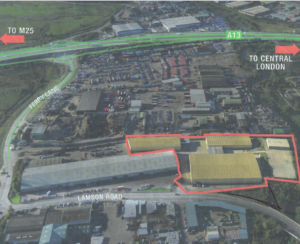
Elimination
The elimination of the need for municipal waste management in the city by the year 2031 is the ultimate objective of the London Plan, which aims to achieve this goal as soon as possible.
The London Plan incorporates a waste management plan with the goals of lowering the amount of waste that is sent to landfills and fostering the development of facilities for waste management that create lower levels of carbon dioxide. This will be accomplished by increasing the quantity of rubbish that is reused, recycled, and composted, as well as by producing energy from waste that is not recycled in the most environmentally friendly manner possible in order to make up for the quantity of garbage that is not recycled.
Policy and frameworks
Policy 5.16 of the London Plan, which is titled “Waste self sufficiency,” outlines a goal of recycling and composting commercial and industrial waste at a rate of 70% by the year 2020. This target is part of the plan’s “Waste self sufficiency” aim. The objective of reaching “waste self sufficiency” was the motivation for the establishment of this goal. The London Plan specifies a number of potential locations all across the city that might house waste treatment plants. These locations can be found in the plan. These locations include appropriate brownfield sites, places that already have waste management systems in place, and strategic industrial locations (see paragraph 5.82). The “material recycling facilities” that sort rubbish into bulk or smaller pieces are taken into account as prospective contributors to apportionment in the London Plan. This is because the London Plan recognises the value of these facilities. The London Plan is concerned with both the maintenance of existing waste disposal infrastructure and the use of those facilities in the most effective way that is practically possible. Maintaining the facilities is the primary emphasis of the strategy in this particular regard.
Policy W2 of the Joint Waste Disposal Planning Document (JWDPD) outlines the areas of responsibility for waste management that fall within the purview of the East London Waste Authority during the life of the plan. This obligation falls within the jurisdiction of the East London Waste Authority. Schedule 1 contains a list of operational waste sites that are safeguarded by the JWDPD, while Schedule 2 has a list of potential waste-using facilities. Both lists may be accessed in the same document. It is requested of the applicant that they show evidence that there are no alternative sites that are available for usage that are compliant with the criteria of the Joint Waste DPD. The applicant has been provided with a copy of this challenge. This is due to the fact that not a single timetable takes into consideration the location of the development that is going to be planned. 19 One of the many reasons why this is the case is because of this. An alternative site assessment in support of the application has been provided by the applicant. This assessment arrives at the conclusion that none of the sites listed in schedule 1 of the JWDPD are suitable for the proposed use, and that only three of the five sites listed in schedule 2 are suitable for further assessment. The applicant has provided this assessment as part of the application process. As part of the application process, the applicant has given this alternate site evaluation (the sites at Dagenham Dock, Ferry Lane North, and Beckton Riverside, plus the proposed application site at Lamson Road). The land ownership, accessibility, and transportability of these locations have all been analysed, and after that, these regions have been analysed in terms of additional criteria, such as their capability to deal with rubbish and their accessibility.
Site Analysis
It was found that the Ferry Lane Site would not be sustainable because it would compete with an existing trash disposal company. Additionally, it was concluded that the Dagenham Dock would not be an ideal place for a facility since there was inadequate land in the surrounding area. In addition, it was decided that the site of Dagenham Dock would not be suitable for a facility since there was not enough land in the surrounding area to support such a location. The property at Beckton Riverside, which had been considered to be a prospective location for the planned plant, was eliminated from consideration as a result of delays in the supply of the materials. There is a possibility that these conclusions are accurate; nevertheless, very little evidence of the processes and conversations that led to the rejection of the other places has been presented. These inferences are based on the fact that there is a chance that these inferences are accurate. The applicant is expected to offer extra information on the site selection process in order to deliver an in-depth analysis and reliable results. The purpose of this requirement is to ensure the credibility of the findings. This content need to cover the outcomes of conversations held with landowners in addition to other topics that are important.
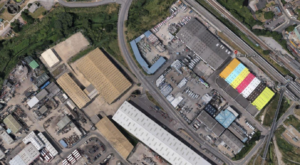
If this additional evidence is supplied to prove that the schedule 2 sites are not acceptable, then the use of this industrial site for waste purposes is likely to be permitted in terms of strategic planning. This is because the use of this industrial site for waste purposes is likely to be less disruptive to the environment. This is due to the fact that the usage of this industrial site for the disposal of trash is expected to have a less impact on the surrounding ecosystem.
The Importance of Having a Wide Variety of Spaces That Can Be Reached Easily(Winfield2018)
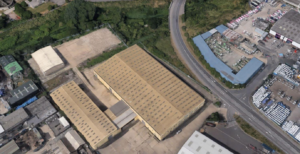
Because the proposed solution requires finding a new site for a waste dump, which isn’t currently accounted for in the Joint Waste DPD, the Havering Council is concerned that the project will end up costing more money than they are able to pay for. This is because the proposed solution requires finding a new site for a waste dump. Because of this, the Havering Council is afraid that the overall cost of the project will wind up being far more than what they are able to bear financially. The applicant has made reference to the capacity gap that has been found in the statistics that have been supplied by the JWDPD for the recovery of C&I waste, which is estimated to be around 269,370 tonnes by the year 2020/21.1. The applicant has brought up the issue of a capacity shortfall; nevertheless, the document acknowledges that the East London Trash Authority (ELWA) region will continue to play a vital role in the management of C&I waste that is generated in other parts of London. Due to the fact that there have been no additional areas added to Schedule 2 of the JWDPD that have been made available for waste application, the ELWA and Havering continue to operate at a capacity that is lower than their maximum that has been authorised. It is quite likely that London would be able to keep its authorised budget for running trash while concurrently developing this proposed plant, which would assist the city in reaching its goal of garbage self-sufficiency by the year 2031. This would be a significant accomplishment for London(Feng,2020).
Polices analysis
In addition to the commitment that the government made in 2011 to “improve capacity to process C&I and C&D waste through increased information and creating supply chains for recyclates and solid recovered fuel,” the applicant has also brought up the Trash (England and Wales) Regulations 2011 as an issue. This is in addition to the government’s commitment to “improve capacity to process C&I and C&D waste through increased information and creating supply chains for recyclates and solid recovered fuel.” The implementation of this idea would result in a part of the waste that would ordinarily be sent to the Rainham Landfill being converted into a valuable resource that could be used for the propulsion of motor vehicles. This would be possible since the waste would have been repurposed. In order to attain this goal, the waste would have to be converted into an alternate fuel. The idea is therefore a step in the right direction toward the goal of the London Plan, which is to recycle 47% of C&I rubbish by the year 2020 and recover 70% of it by the same year. The idea is a step in the right direction toward the goal because it is a step in the right direction toward the goal. To do this, by the end of the same year, 70 percent of the rubbish will have been recovered. It is anticipated that the idea, which is widely recognised and is compatible with the London Plan, will contribute to the accomplishment of these objectives since it is compatible with the London Plan.
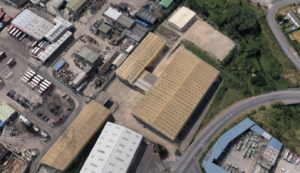
The integration of the city’s system of open spaces and the establishment of sustainable connections between established neighbourhoods and newer ones, as well as between established neighbourhoods and hubs of economic activity, are two of the primary focuses of several of the goals that are outlined in the London Plan. These connections will be established between established neighbourhoods and hubs of economic activity as well as between established neighbourhoods and newer ones. These linkages will be formed between existing neighbourhoods and centres of economic activity as well as between established neighbourhoods and younger ones. Additionally, these connections will be made between established neighbourhoods and more recent ones. Policy 2.18 of the London Plan addresses the specific challenge of upgrading London’s green infrastructure head-on. This policy also offers help for the connection of green infrastructure as an integrated component of new development. Another objective of this programme is to cut down on the amount of carbon dioxide emissions that are produced by new building. The programme works to reduce these emissions as much as possible. Energy that doesn’t add to the problem of pollution and doesn’t need the use of undeveloped land: When it comes to the planning of London’s regeneration, the All London Green Grid Supplementary Design Guidance (ALGG SPG) gives advice on how to integrate open space networks and sustainable linkages. This guidance was developed as part of the All London Green Grid. This is significant for the city’s ability to maintain its vibrancy in the future. The ALGG SPG serves as the foundation of the public realm plan in the Draft Consultation London Riverside Opportunity Area Planning Framework, in addition to providing support and promotion for the Mayor’s Green Enterprise District (GED) programme. This is included in the London Riverside Opportunity Area Planning Framework(Winfield,2018).
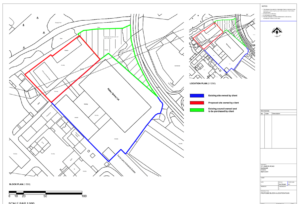
Planning Framework
This was accomplished within the parameters of the Planning Framework for the London Riverside Opportunity Area. The planning framework for the London Riverside Opportunity Area takes this into consideration and includes it (OAPF). Greater East London Development Corporation (GED) hopes to achieve its mission of enhancing the region’s attractiveness as a destination in which to live, work, and visit by concentrating its efforts on the opportunity zones that are located in east London. This will allow the corporation to fulfil its mandate. This will be completed successfully. The success of the London Plan and the ongoing rehabilitation of East London is contingent on the construction of a public space that is not just welcoming but also distinctive. This is because the two factors are intertwined. This is due to the fact that the two separate endeavours are connected. The Rainham Employment area and the place where GED applications are taken are both included in the London Riverside opportunity area. This region is known as the London Riverside opportunity area. This is crucial information on the location of the examination that will be administered.
The London Riverside Opportunity Area Planning Framework (OAPF), which supported improved access to the region by public transit and on foot and was open for feedback from the public from December 2011 to March 2012, got its name from an opportunity region in the city of London. The OAPF was open for public comment from December 2011 to March 2012. Before this framework ever existed, it was the London Riverside Opportunity Region that served as the impetus for its development. During the course of this investigation, one of the elements that will be taken into consideration is the present location (please see section above).
48 In accordance with London Plan Policy 6.10, the consultation draught of the OAPF encourages the construction of new links and wildlife corridors between Rainham Marshes and Rainham Creek. The Rainham Marshes and Rainham Creek would both be connected by these pathways. In addition, it has been suggested that a bus bridge be constructed between Ferry Lane and Creek Way in order to enhance connectivity between the west and the east. This bridge would link Creek Way and Ferry Lane (London Plan Policy 6.7). TfL is of the opinion that the applicant should make a contribution to the s106 duties for the construction of these pedestrian links because they are required for increasing the accessibility of the area and will directly benefit the site. Additionally, TfL is of the opinion that the applicant should make a contribution to the s106 duties for the construction of these pedestrian links. TfL is of the view that the applicant ought to pay a contribution toward the s106 obligations for the building of these pedestrian linkages, and they have expressed this position to the applicant.
TfL acknowledges and appreciates the applicant’s efforts to reduce the reliance of staff members on their own personal automobiles by including environmentally friendly transport options in the draught Travel Plan that was provided as part of the application. These efforts were included in the draught Travel Plan that was provided as part of the application. These efforts were outlined in the Travel Plan that was submitted as part of the application package. TfL would like to recognise and express its appreciation for these efforts. Because of the absence of this component, which was highlighted by the findings of the ATTrBuTE study that was carried out by TfL, further work is required to construct the plan. In order to fulfil the requirements of the S106 agreement, the travel plan must be finalised, implemented, paid for, monitored, and reviewed.
Recommendations
50 According to the policy 6.14 of the London Plan, Transport for London is expected to have a construction logistics plan (CLP) in order for the guarantee to be maintained. The CLP is in responsibility of assessing whether or not certain building practises will be safe for the environment that is around the construction site and efficient in their use of the resources that are readily accessible.
It is not required for the proposed development to have a plan for delivery and servicing because of the nature of the planned development; nonetheless, the applicant should still indicate how traffic flows to and from the site are expected to be managed in the future. It is advised that significant vehicle traffic be planned to occur outside of the morning and evening rush hours in order to limit the negative impacts on the TLRN and the towns that are situated in its proximity. This is done in an effort to reduce the number of people stuck in traffic. On account of this, there would be a decrease in the amount of congestion that can be seen on the roadways. In order for these ideas to be implemented, Havering Council has to be made aware of them and provide their consent to do so; this may be achieved via a procedure that is known as conditional approval.
Conclusion
According to the findings of an investigation into the potential effects of this development, it is extremely unlikely that important highways and the public transportation system will be significantly impacted by the effects of this development. These findings are based on the findings of an investigation into the potential effects of this development. The findings of the analysis led to the formation of this conclusion (52). TfL has requested that a number of conditions be satisfied, including the submission of a construction and logistics plan as well as a revised Travel Plan; contributions to local pedestrian improvements that are in line with the London Riverside Opportunity Area Planning Framework; and the provision of formal cycling parking as well as changing facilities. TfL has requested that all of these conditions be satisfied. TfL has made the request that each and every one of these requirements be fulfilled.
References
Bathelt, H. and Li, P., 2020. Processes of building cross-border knowledge pipelines. Research Policy, 49(3), p.103928.
Belussi, L., Barozzi, B., Bellazzi, A., Danza, L., Devitofrancesco, A., Fanciulli, C., Ghellere, M., Guazzi, G., Meroni, I., Salamone, F. and Scamoni, F., 2019. A review of performance of zero energy buildings and energy efficiency solutions. Journal of building engineering, 25, p.100772.
Feng, W., Zhang, Q., Ji, H., Wang, R., Zhou, N., Ye, Q., Hao, B., Li, Y., Luo, D. and Lau, S.S.Y., 2019. A review of net zero energy buildings in hot and humid climates: Experience learned from 34 case study buildings. Renewable and Sustainable Energy Reviews, 114, p.109303.
Gualini, E., 2018. Planning and the intelligence of institutions: Interactive approaches to territorial policy-making between institutional design and institution-building. Routledge.
Holmberg, J. and Sandbrook, R., 2019. Sustainable development: what is to be done?. In Policies for a small planet (pp. 19-38). Routledge.
Hu, M. and Qiu, Y., 2019. A comparison of building energy codes and policies in the USA, Germany, and China: progress toward the net-zero building goal in three countries. Clean Technologies and Environmental Policy, 21(2), pp.291-305.
Hudson, B., Hunter, D. and Peckham, S., 2019. Policy failure and the policy-implementation gap: can policy support programs help?. Policy design and practice, 2(1), pp.1-14.
McNaughton, D., Light, J., Beukelman, D.R., Klein, C., Nieder, D. and Nazareth, G., 2019. Building capacity in AAC: A person-centred approach to supporting participation by people with complex communication needs. Augmentative and Alternative Communication, 35(1), pp.56-68.
Nasution, A.P., Wibowo, E.A., Ramdani, R. and Rofiqah, T., 2021. Urgensity of Environmental Management System Implementation on Oil Palm Plantation Management Policies in North Sumatera. Journal of Social Transformation and Regional Development, 3(1), pp.1-6.
Reid, M.J., Arinaminpathy, N., Bloom, A., Bloom, B.R., Boehme, C., Chaisson, R., Chin, D.P., Churchyard, G., Cox, H., Ditiu, L. and Dybul, M., 2019. Building a tuberculosis-free world: The Lancet Commission on tuberculosis. The Lancet, 393(10178), pp.1331-1384.
Rondinelli, D.A., 2019. Applied methods of regional analysis: the spatial dimensions of development policy. Routledge.
Waldner, D., 2018. State building and late development. In State Building and Late Development. Cornell University Press.
Winfield, A.F. and Jirotka, M., 2018. Ethical governance is essential to building trust in robotics and artificial intelligence systems. Philosophical Transactions of the Royal Society A: Mathematical, Physical and Engineering Sciences, 376(2133), p.20180085.
Winfield, A.F. and Jirotka, M., 2018. Ethical governance is essential to building trust in robotics and artificial intelligence systems. Philosophical Transactions of the Royal Society A: Mathematical, Physical and Engineering Sciences, 376(2133), p.20180085.
Know more about UniqueSubmission’s other writing services:

